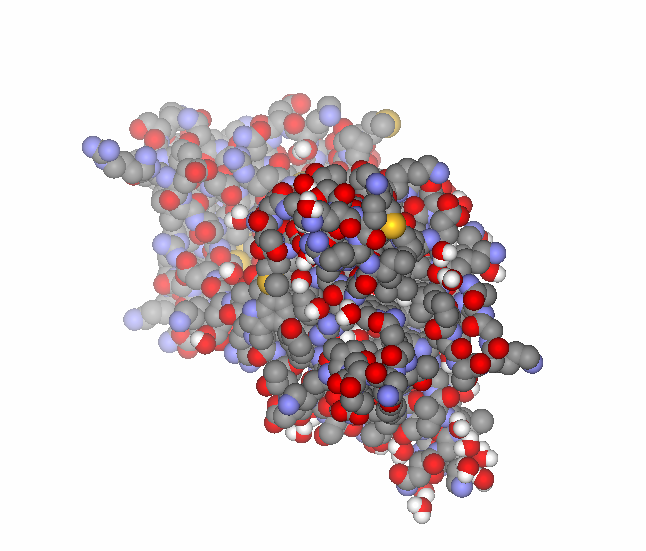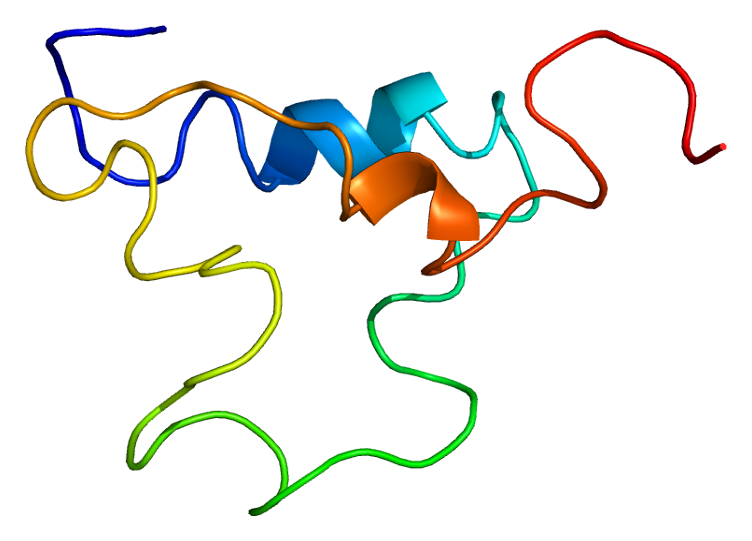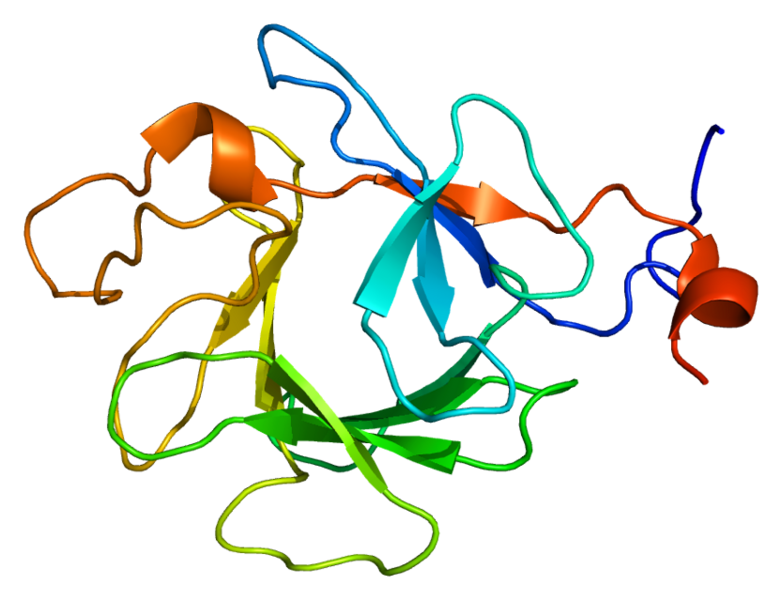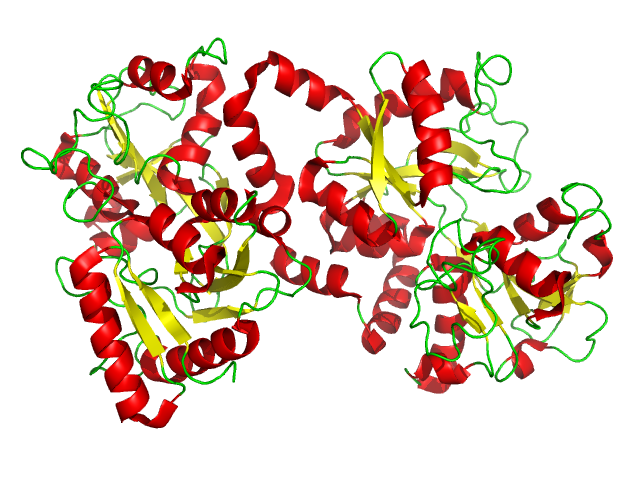Biomarkers of aging. Frailty panel. Part 2
We continue the description of the Frailty panel, see the previous post. This work is an essential step in creating a diagnosis of aging. That, in turn, is the central theme in the task of a radical extension of human life.
5. Neurons and neuromuscular junction .
Neuron loss occurs throughout life, but especially after the age of 60 years. What causes brain atrophy, neuroinflammation, reduced cognitive abilities, disorders in the neuromuscular junction and loss of motor abilities in the elderly.
The relationship between physical weakness and cognitive abilities in Alzheimer's disease, vascular dementia, and mild cognitive disorders was described. It has been established that the presence of brain pathologies, including Alzheimer's disease, cerebral vascular disease and Parkinson's disease are associated with a faster decrease in walking speed and a more rapid progression of senile asthenia.
Taken together, age-related neuro-inflammatory, vascular, metabolic changes can have a huge impact on neural circuits, impaired cognitive functions and the occurrence of neurodegenerative diseases such as age-related dementia, neuropsychiatric disorders, depression, which are considered as risk factors and consequences of aging asthenia. .
In this regard, some proteins have been recognized as potential biomarkers for cognitive impairment, neuronal damage and neuromuscular connections:
5.1. Neurotrophic brain factor (BDNF) . It is expressed in many tissues, including the nervous, musculoskeletal, respiratory, cardiovascular, urogenital and reproductive systems. The brain is active in the hippocampus, cortex and forebrain. This protein regulates important aspects of the development and function of neurons. Such as the survival and differentiation of various neuronal populations, synaptogenesis, neuronal recovery after injury. BDNF is also involved in energy homeostasis and body weight control.

The structure of the brain neurotrophic factor
5.2. Agrin (Agrin, AGRN). It has an important role in the formation and stabilization of synapses, including in neuromuscular connections. Agrin is expressed in various tissues, as well as in non-neuronal cell types, heart cells, liver, kidney, lung, and Schwann cells. It is associated with various diseases, such as diabetes, diseases of the kidneys, lungs, cardiovascular, immunological and neurodegenerative diseases, as well as osteoarthritis and head injuries.
5.3. Progranulin (PGRN). Protein rich in cysteine, which is synthesized by epithelial cells, cells of the immune system, neurons, adipocytes. It was first identified as a growth factor involved in early embryogenesis, tissue remodeling, which has anti-inflammatory properties. In the central nervous system, progranulin has a neurotrophic and neuroprotective effect.
5.4. Complement component C3 and C1q (complement factor 3 and 1Q) . Proteins of the acute phase of inflammation, belong to the complement cascade of the immune system, which controls the identification and elimination of unwanted pathogens, as well as apoptotic cells and ineffective synapses. Synthesized in the liver, macrophages, fibroblasts and lymphoid cells.
5.5.AGER (Advanced glycosylation end-product specific receptor) receptor . Belongs to the family of immunoglobulins. Its activation is associated with the development of diabetes, neurological diseases and some forms of cancer.
5.6. Protein HMGB1 (high mobility group box 1) . Belongs to the group of nuclear nonhistone proteins HMG. It interacts with the nuclear DNA of a cell (regulates gene expression), plays a role in inflammation and an adaptive immune response, being a cytokine mediator. HMGB1 is also an important regulator of mitochondrial function, cell proliferation and autophagy. An increase in HMGB1 is observed in neuroinflammation after brain injuries, with epilepsy and cognitive dysfunction, and can also cause and intensify the inflammatory cascade in ischemic damage.

The structure of the protein HMGB1
5.7. Soluble tumor suppressor ST2 (soluble suppression of tumorigenicity 2). Participates in immune reactions, stimulates increased differentiation of various subsets of T-cells and the launch of antigen-independent production of cytokines. Associated with age-related diseases, such as type 2 diabetes, cardiovascular disease.
6. Cytoskeleton and hormones. The cytoskeleton is a cellular component whose role has been significantly underestimated for a long time, and is now recognized as a significant factor in various cellular functions. And this is vital for signaling networks that link cellular processes, such as polarization, organelle mobility, reactions to external signals. Oxidative stress can damage cytoskeleton actin and apoptosis. Thus, it is not surprising that the cytoskeleton plays an important role in aging and age-related diseases.
Hormonal cascades are regulated by positive and negative feedback loops and, thus, change rapidly, and affect the production and secretion of each other. The dysregulation of hormones during aging is well known. Currently, it is believed that hormones directly affect health in the process of aging and represent the main objectives in the treatment of anti-aging, for example, Klotho and ghrelin. For example, ghrelin or synthetic agonists are used as measures to increase appetite and muscle mass in disorders associated with senile asthenia. In addition, most hormones are easy to detect in serum and urine, and they can be good prognostic factors for biological aging.
The following biomarkers were identified here:
6.1. A growth hormone. Growth hormone that stimulates growth, reproduction and cell regeneration. Growth hormone stimulates JAK-STAT production of another hormone, IGF-1, via the JAK-STAT signaling pathway. Therefore, it is assumed that growth hormone exerts its action mainly through IGF-1.

Growth Hormone Structure
6.2. Insulin-like growth factor 1, IGF-I (insulin-like growth factor 1 ). Promotes growth and development of the fetus during pregnancy and after birth in the postnatal period. Although the IGF-1 gene is ubiquitously expressed in the body, IGF-I is mainly produced in the liver.
IGF-1 plays a crucial role at the molecular level in many processes, such as carbohydrate, fat and protein metabolism, homeostasis and cellular organization, cell differentiation, cellular aging and apoptosis. He also participates in various physiological and pathophysiological processes associated with the immune system, inflammation, mitochondrial dysfunction and age-related diseases.

The structure of the protein IGF-1
6.3. Klotho . Transmembrane protein, which controls the body's sensitivity to insulin and plays an important role in cellular homeostasis. Is one of the proteins most clearly associated with aging, its amount decreases markedly with age. Very actively investigated in modern gerontology.
6.4.Fibroblast growth factor 23 (fibroblast growth factor 23, FGF23) . FGF23 is a member of the fibroblast growth factor family (FGF) and is responsible for the metabolism of phosphate and vitamin D. It is secreted by osteocytes, requires -Klotho as a co-receptor for its biological action.

The structure of the protein FGF23
6.5. Fibroblast growth factor 21 (fibroblast growth factor 21, FGF21). FGF21 is a hepatokin, that is, a hormone secreted by the liver. Regulates glucose uptake through the central nervous system. In addition to mitochondrial diseases, it is used as a potential biomarker in various pathologies, such as metabolic syndrome, diabetes mellitus, sepsis, diseases of the kidneys, liver, musculoskeletal system, cardiovascular and eye diseases, as well as osteoarthritis, rheumatoid arthritis.
6.6. Resistin (Resistin, RETN). Is adipokine, that is, secreted by adipose tissue (adipocytes). Resistin plays an important role in many processes, such as inflammation, cell proliferation, apoptosis, and mitochondrial function. Resistin is associated with the emergence of insulin resistance and leptin ... Elevated levels of resistin have been reported in adults and the elderly with heart failure, coronary heart disease and other cardiovascular pathologies.
6.7. Adiponectin (ADIPOQ). It is another adipokine secreted from adipose tissue and circulates as a hormone in the blood. Adiponectin levels are reduced in various pathological conditions, such as obesity, diabetes, and coronary artery disease. Adiponectin regulates various processes, including those associated with aging, including inflammation, mitochondrial function, apoptosis and cell proliferation. So, it protects cells from inflammation, reduces the secretion of cytokines, inhibits the transmission of signals of the pro-inflammatory factor NF-κB.
Adiponectin is being actively studied as a biomarker for various diseases, including hepatitis C, inflammation, kidney disease, atherosclerosis, and migraine, as well as directly as a therapeutic target. It has great potential as a diagnostic, prognostic and therapeutic biomarker of aging.

Adiponectin structure
6.8. Leptin (LEP). It is another circulating adipokine. In addition to adipocytes, it is also expressed in various other tissues: cardiovascular, reproductive, musculoskeletal, liver and neurons. Leptin controls body weight and energy costs. In addition, leptin regulates various physiological and pathophysiological processes, including apoptosis, angiogenesis, cell proliferation, energy metabolism, inflammation, diabetes, reproduction, and obesity. There is clear evidence of the role of leptin in aging and age-related diseases.
6.9. Ghrelin (GHRL). It is a small peptide hormone secreted mainly in the stomach, intestines, pancreas and hypothalamus. Plays an important role in the regulation of appetite and metabolism. It causes multiple biological effects, such as: 1) an increase in appetite, 2) an increase in food intake, 3) a modulation of glucose homeostasis and insulin sensitivity, and 4) an increase in the production of growth hormone.
And in addition to these six main groups, the authors identified several potential biomarkers of aging that were not included in one group:
1) MicroRNA . Small non-coding RNA molecules that play an important role in the regulation of gene expression and are associated with aging and age-related diseases.
2) Adenosylhomocysteinase (Adenosylhomocysteinase, AHCY). Controls intracellular levels of AHC (S-adenosylhomocystein), which is important for methylation processes and metabolic functions. The high priority in evaluating AHCY is based on the fact that the dysregulation of AHCY during aging and in age-related diseases has already been proven and direct and indirect inhibition showed a clear therapeutic effect.
3) Circulating (extracellular) microvesicles. Small (0.1-1.0 microns) extracellular vesicles present in the blood. They enter the blood from various cell types, mainly from platelets, as well as from red blood cells, granulocytes, monocytes, lymphocytes and endothelial cells. They can be released during cell activation, cell damage, cell aging and apoptosis. They contain immunologically active molecules that affect various cellular processes, such as inflammation, coagulation, antigen presentation and apoptosis.
4) Keratin 18 (KRT18). It refers to cytokeratins, proteins that make up the intracellular intermediate filaments of the cytoskeleton of epithelial cells. KRT18 is associated with mitochondrial dysfunction. It is a well-known marker of apoptosis and has been proposed as an indicator of the progression of chronic liver diseases, such as non-alcoholic fatty liver disease, a very common pathology associated with metabolic syndrome.
5) Glycoprotein non-metastatic melanoma B (glycoprotein nonmetastatic melanoma B, GPNMB). Membrane protein, GPNMB has anti-inflammatory and regenerative functions. Thus, in acute renal and hepatic insufficiency, GPNMB contributes to the polarization of macrophages and the balance between fibrosis and fibrolysis. Similarly, the beneficial effects of GPNMB and its importance as a biomarker are described in non-alcoholic steatohepatitis and wound healing, where it regulates crosstalk between macrophages and mesenchymal stem cells. In addition, the important role of GPNMB is manifested in neurodegenerative diseases. Thus, GPNMB proved to be a neuroprotector in an animal model of amyotrophic lateral sclerosis and cerebral ischemia.
6) Lactoferrin (LTF, lactotransferrin). Polyfunctional protein from the transferrin family. It is one of the components of the immune system, participates in the system of non-specific humoral immunity, regulates the functions of immunocompetent cells, is a protein of the acute phase of inflammation. Lactoferrin has the potential as a biomarker in the detection of age-related neurodegenerative diseases - Alzheimer's and Parkinson's diseases, as well as cardiovascular pathologies.

Lactoferrin structure
Summarizing their research, the authors believe that the panel of biomarkers formed by them should be more effective in preventing premature aging than individual markers. The accumulation of small deviations in health may ultimately lead to a larger, more clinically significant, organ malfunction. The panel of biomarkers may be more sensitive to relatively small changes, and together will help to identify at an early stage the overall decline in body functions, which will contribute to the development of senile asthenia.
Prepared by: Alexey Rzheshevsky
Source:
5. Neurons and neuromuscular junction .
Neuron loss occurs throughout life, but especially after the age of 60 years. What causes brain atrophy, neuroinflammation, reduced cognitive abilities, disorders in the neuromuscular junction and loss of motor abilities in the elderly.
The relationship between physical weakness and cognitive abilities in Alzheimer's disease, vascular dementia, and mild cognitive disorders was described. It has been established that the presence of brain pathologies, including Alzheimer's disease, cerebral vascular disease and Parkinson's disease are associated with a faster decrease in walking speed and a more rapid progression of senile asthenia.
Taken together, age-related neuro-inflammatory, vascular, metabolic changes can have a huge impact on neural circuits, impaired cognitive functions and the occurrence of neurodegenerative diseases such as age-related dementia, neuropsychiatric disorders, depression, which are considered as risk factors and consequences of aging asthenia. .
In this regard, some proteins have been recognized as potential biomarkers for cognitive impairment, neuronal damage and neuromuscular connections:
5.1. Neurotrophic brain factor (BDNF) . It is expressed in many tissues, including the nervous, musculoskeletal, respiratory, cardiovascular, urogenital and reproductive systems. The brain is active in the hippocampus, cortex and forebrain. This protein regulates important aspects of the development and function of neurons. Such as the survival and differentiation of various neuronal populations, synaptogenesis, neuronal recovery after injury. BDNF is also involved in energy homeostasis and body weight control.

The structure of the brain neurotrophic factor
5.2. Agrin (Agrin, AGRN). It has an important role in the formation and stabilization of synapses, including in neuromuscular connections. Agrin is expressed in various tissues, as well as in non-neuronal cell types, heart cells, liver, kidney, lung, and Schwann cells. It is associated with various diseases, such as diabetes, diseases of the kidneys, lungs, cardiovascular, immunological and neurodegenerative diseases, as well as osteoarthritis and head injuries.
5.3. Progranulin (PGRN). Protein rich in cysteine, which is synthesized by epithelial cells, cells of the immune system, neurons, adipocytes. It was first identified as a growth factor involved in early embryogenesis, tissue remodeling, which has anti-inflammatory properties. In the central nervous system, progranulin has a neurotrophic and neuroprotective effect.
5.4. Complement component C3 and C1q (complement factor 3 and 1Q) . Proteins of the acute phase of inflammation, belong to the complement cascade of the immune system, which controls the identification and elimination of unwanted pathogens, as well as apoptotic cells and ineffective synapses. Synthesized in the liver, macrophages, fibroblasts and lymphoid cells.
5.5.AGER (Advanced glycosylation end-product specific receptor) receptor . Belongs to the family of immunoglobulins. Its activation is associated with the development of diabetes, neurological diseases and some forms of cancer.
5.6. Protein HMGB1 (high mobility group box 1) . Belongs to the group of nuclear nonhistone proteins HMG. It interacts with the nuclear DNA of a cell (regulates gene expression), plays a role in inflammation and an adaptive immune response, being a cytokine mediator. HMGB1 is also an important regulator of mitochondrial function, cell proliferation and autophagy. An increase in HMGB1 is observed in neuroinflammation after brain injuries, with epilepsy and cognitive dysfunction, and can also cause and intensify the inflammatory cascade in ischemic damage.

The structure of the protein HMGB1
5.7. Soluble tumor suppressor ST2 (soluble suppression of tumorigenicity 2). Participates in immune reactions, stimulates increased differentiation of various subsets of T-cells and the launch of antigen-independent production of cytokines. Associated with age-related diseases, such as type 2 diabetes, cardiovascular disease.
6. Cytoskeleton and hormones. The cytoskeleton is a cellular component whose role has been significantly underestimated for a long time, and is now recognized as a significant factor in various cellular functions. And this is vital for signaling networks that link cellular processes, such as polarization, organelle mobility, reactions to external signals. Oxidative stress can damage cytoskeleton actin and apoptosis. Thus, it is not surprising that the cytoskeleton plays an important role in aging and age-related diseases.
Hormonal cascades are regulated by positive and negative feedback loops and, thus, change rapidly, and affect the production and secretion of each other. The dysregulation of hormones during aging is well known. Currently, it is believed that hormones directly affect health in the process of aging and represent the main objectives in the treatment of anti-aging, for example, Klotho and ghrelin. For example, ghrelin or synthetic agonists are used as measures to increase appetite and muscle mass in disorders associated with senile asthenia. In addition, most hormones are easy to detect in serum and urine, and they can be good prognostic factors for biological aging.
The following biomarkers were identified here:
6.1. A growth hormone. Growth hormone that stimulates growth, reproduction and cell regeneration. Growth hormone stimulates JAK-STAT production of another hormone, IGF-1, via the JAK-STAT signaling pathway. Therefore, it is assumed that growth hormone exerts its action mainly through IGF-1.

Growth Hormone Structure
6.2. Insulin-like growth factor 1, IGF-I (insulin-like growth factor 1 ). Promotes growth and development of the fetus during pregnancy and after birth in the postnatal period. Although the IGF-1 gene is ubiquitously expressed in the body, IGF-I is mainly produced in the liver.
IGF-1 plays a crucial role at the molecular level in many processes, such as carbohydrate, fat and protein metabolism, homeostasis and cellular organization, cell differentiation, cellular aging and apoptosis. He also participates in various physiological and pathophysiological processes associated with the immune system, inflammation, mitochondrial dysfunction and age-related diseases.

The structure of the protein IGF-1
6.3. Klotho . Transmembrane protein, which controls the body's sensitivity to insulin and plays an important role in cellular homeostasis. Is one of the proteins most clearly associated with aging, its amount decreases markedly with age. Very actively investigated in modern gerontology.
6.4.Fibroblast growth factor 23 (fibroblast growth factor 23, FGF23) . FGF23 is a member of the fibroblast growth factor family (FGF) and is responsible for the metabolism of phosphate and vitamin D. It is secreted by osteocytes, requires -Klotho as a co-receptor for its biological action.

The structure of the protein FGF23
6.5. Fibroblast growth factor 21 (fibroblast growth factor 21, FGF21). FGF21 is a hepatokin, that is, a hormone secreted by the liver. Regulates glucose uptake through the central nervous system. In addition to mitochondrial diseases, it is used as a potential biomarker in various pathologies, such as metabolic syndrome, diabetes mellitus, sepsis, diseases of the kidneys, liver, musculoskeletal system, cardiovascular and eye diseases, as well as osteoarthritis, rheumatoid arthritis.
6.6. Resistin (Resistin, RETN). Is adipokine, that is, secreted by adipose tissue (adipocytes). Resistin plays an important role in many processes, such as inflammation, cell proliferation, apoptosis, and mitochondrial function. Resistin is associated with the emergence of insulin resistance and leptin ... Elevated levels of resistin have been reported in adults and the elderly with heart failure, coronary heart disease and other cardiovascular pathologies.
6.7. Adiponectin (ADIPOQ). It is another adipokine secreted from adipose tissue and circulates as a hormone in the blood. Adiponectin levels are reduced in various pathological conditions, such as obesity, diabetes, and coronary artery disease. Adiponectin regulates various processes, including those associated with aging, including inflammation, mitochondrial function, apoptosis and cell proliferation. So, it protects cells from inflammation, reduces the secretion of cytokines, inhibits the transmission of signals of the pro-inflammatory factor NF-κB.
Adiponectin is being actively studied as a biomarker for various diseases, including hepatitis C, inflammation, kidney disease, atherosclerosis, and migraine, as well as directly as a therapeutic target. It has great potential as a diagnostic, prognostic and therapeutic biomarker of aging.

Adiponectin structure
6.8. Leptin (LEP). It is another circulating adipokine. In addition to adipocytes, it is also expressed in various other tissues: cardiovascular, reproductive, musculoskeletal, liver and neurons. Leptin controls body weight and energy costs. In addition, leptin regulates various physiological and pathophysiological processes, including apoptosis, angiogenesis, cell proliferation, energy metabolism, inflammation, diabetes, reproduction, and obesity. There is clear evidence of the role of leptin in aging and age-related diseases.
6.9. Ghrelin (GHRL). It is a small peptide hormone secreted mainly in the stomach, intestines, pancreas and hypothalamus. Plays an important role in the regulation of appetite and metabolism. It causes multiple biological effects, such as: 1) an increase in appetite, 2) an increase in food intake, 3) a modulation of glucose homeostasis and insulin sensitivity, and 4) an increase in the production of growth hormone.
And in addition to these six main groups, the authors identified several potential biomarkers of aging that were not included in one group:
1) MicroRNA . Small non-coding RNA molecules that play an important role in the regulation of gene expression and are associated with aging and age-related diseases.
2) Adenosylhomocysteinase (Adenosylhomocysteinase, AHCY). Controls intracellular levels of AHC (S-adenosylhomocystein), which is important for methylation processes and metabolic functions. The high priority in evaluating AHCY is based on the fact that the dysregulation of AHCY during aging and in age-related diseases has already been proven and direct and indirect inhibition showed a clear therapeutic effect.
3) Circulating (extracellular) microvesicles. Small (0.1-1.0 microns) extracellular vesicles present in the blood. They enter the blood from various cell types, mainly from platelets, as well as from red blood cells, granulocytes, monocytes, lymphocytes and endothelial cells. They can be released during cell activation, cell damage, cell aging and apoptosis. They contain immunologically active molecules that affect various cellular processes, such as inflammation, coagulation, antigen presentation and apoptosis.
4) Keratin 18 (KRT18). It refers to cytokeratins, proteins that make up the intracellular intermediate filaments of the cytoskeleton of epithelial cells. KRT18 is associated with mitochondrial dysfunction. It is a well-known marker of apoptosis and has been proposed as an indicator of the progression of chronic liver diseases, such as non-alcoholic fatty liver disease, a very common pathology associated with metabolic syndrome.
5) Glycoprotein non-metastatic melanoma B (glycoprotein nonmetastatic melanoma B, GPNMB). Membrane protein, GPNMB has anti-inflammatory and regenerative functions. Thus, in acute renal and hepatic insufficiency, GPNMB contributes to the polarization of macrophages and the balance between fibrosis and fibrolysis. Similarly, the beneficial effects of GPNMB and its importance as a biomarker are described in non-alcoholic steatohepatitis and wound healing, where it regulates crosstalk between macrophages and mesenchymal stem cells. In addition, the important role of GPNMB is manifested in neurodegenerative diseases. Thus, GPNMB proved to be a neuroprotector in an animal model of amyotrophic lateral sclerosis and cerebral ischemia.
6) Lactoferrin (LTF, lactotransferrin). Polyfunctional protein from the transferrin family. It is one of the components of the immune system, participates in the system of non-specific humoral immunity, regulates the functions of immunocompetent cells, is a protein of the acute phase of inflammation. Lactoferrin has the potential as a biomarker in the detection of age-related neurodegenerative diseases - Alzheimer's and Parkinson's diseases, as well as cardiovascular pathologies.

Lactoferrin structure
Summarizing their research, the authors believe that the panel of biomarkers formed by them should be more effective in preventing premature aging than individual markers. The accumulation of small deviations in health may ultimately lead to a larger, more clinically significant, organ malfunction. The panel of biomarkers may be more sensitive to relatively small changes, and together will help to identify at an early stage the overall decline in body functions, which will contribute to the development of senile asthenia.
Prepared by: Alexey Rzheshevsky
Source:
- Cardoso AL et al. Towards frailty biomarkers: Candidates from genes and pathways are regulated in aging and age-related diseases. Aging Res Rev. 2018 Jul 30. pii: S1568-1637 (18) 30093-X.
